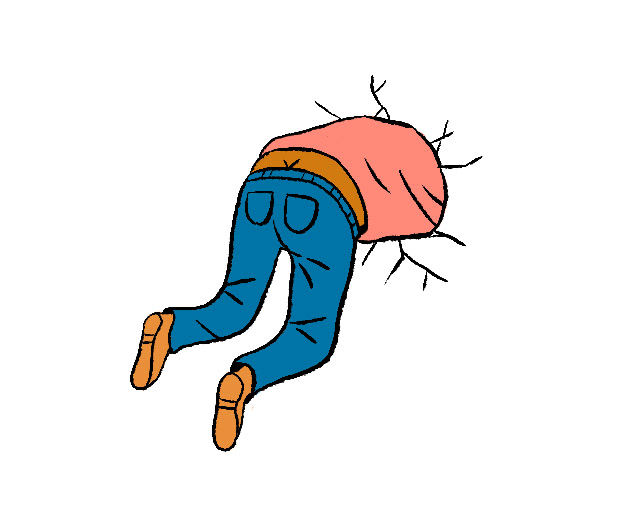Basically, the only things you learn in health are one—don't have sex, two—it bleeds, and three—yes, you can carry a baby. That’s it.
For some reason, vaginas are a pretty taboo conversation in most cases, but as women (and men and human beings) it’s important to know about our bodies and all the cool things they can do (besides grow life, which is cool, but you know that).
1. Your vagina self-cleans
That’s right ladies, no need to use soap up in there, or a douche. Most doctors recommend that you don’t use any soaps or anything with fragrance, even if they’re labeled for vaginal use.
Harsh soaps can disrupt the natural pH balance of your vagina and cause more harm than good. To clean itself, women experience discharge which can occur before or after a period and is normally clear, whitish, sticky, thick and odorless. If your discharge is yellow, green, has an odor or is itchy, call your doctor ASAP, it could be a sign of an infection!
2. Your vagina is smart—it will let you know if something is wrong.
Look out for itching, irritation, bloody discharge any funky smells or anything that seems or feels different. But this is not an excuse to skip out on your annuals (bummer, I know) just because you aren’t actively having symptoms of something, doesn’t mean you shouldn’t get routine care and check-ups!
3. Other than abstinence, implants and IUDs are the most effective forms of reversible birth control.
Both implants and IUDs are long-term and reversible forms of contraception, and both are over 99% effective at preventing pregnancy. That's why the American Academy of Pediatrics recently recommended both options as the best choices for teenagers as a way to prevent pregnancy.
The implant is a matchstick-sized rod that a doctor has to insert into your arm. It releases the hormone progestin, which prevents ovulation and thickens your cervical mucus, making it less hospitable to sperm. It can last up to three years.
The IUD is a T-shaped device that a doctor inserts directly into your uterus. There are hormonal IUDs, and there is a non-hormonal copper version. IUDs can last for 3 to 12 years, depending on the type.
Worth noting: The implant and IUD do not protect against any STDs.
4. The vagina is tilted at roughly a 130-degree angle, this is why you have to insert tampons by aiming them at your back.
It’s pretty interesting to know why we do things, but any healthy provider will tell you that this can change with time, causing women to change the angles in which they insert tampons.
5. People get stuff stuck in their Vaginas, actually often… BUT you can’t actually lose anything up there (phew).
Statistically, women get tampons and condoms stuck up there and they can be hard to retrieve. So, if you get something stuck up there and you can’t retrieve…whatever it is…from the lady parts you can absolutely go to the doctor. And you should, in gynecology, they’ve seen it all and they won’t judge. Plus, getting help is better than getting hurt!
6. Your fallopian tubes are 4-5 inches long.
And only about .5 cm in diameter. Inside them, are papillae or little hairs that help move eggs through them.
7. A doctor once removed a potato that started sprouting vines out of a patient’s vagina. 
The patient told the doctor her mother said it would prevent pregnancy. In that case, mother didn't always know best.
Apparently, you can grow a potato in your vagina, I wouldn’t recommend it though (obvious reasons).
8. Vaginas (and vulvas) come in all shapes, sizes, and colors.
There's no such thing as a "normal" vagina in terms of appearance so you just embrace your lady parts because they are just as unique as you are!
9. Your menstrual blood could help patients suffering from heart failure.
An ERC (endometrial regenerative cells) congestive heart failure phase II clinical trial is currently testing the safety of the ERC, or "stem cells," to treat congestive heart failure patients. Stem cells are extracted from the blood and then grown in culture to generate different types of cells in the body.
In this case, the stem cells are made into muscle cells of the heart, for reparative purposes in these patients. This is an experimental foreign study and is not something that is being done routinely, but yes, it could help patients suffering from heart failure.
































